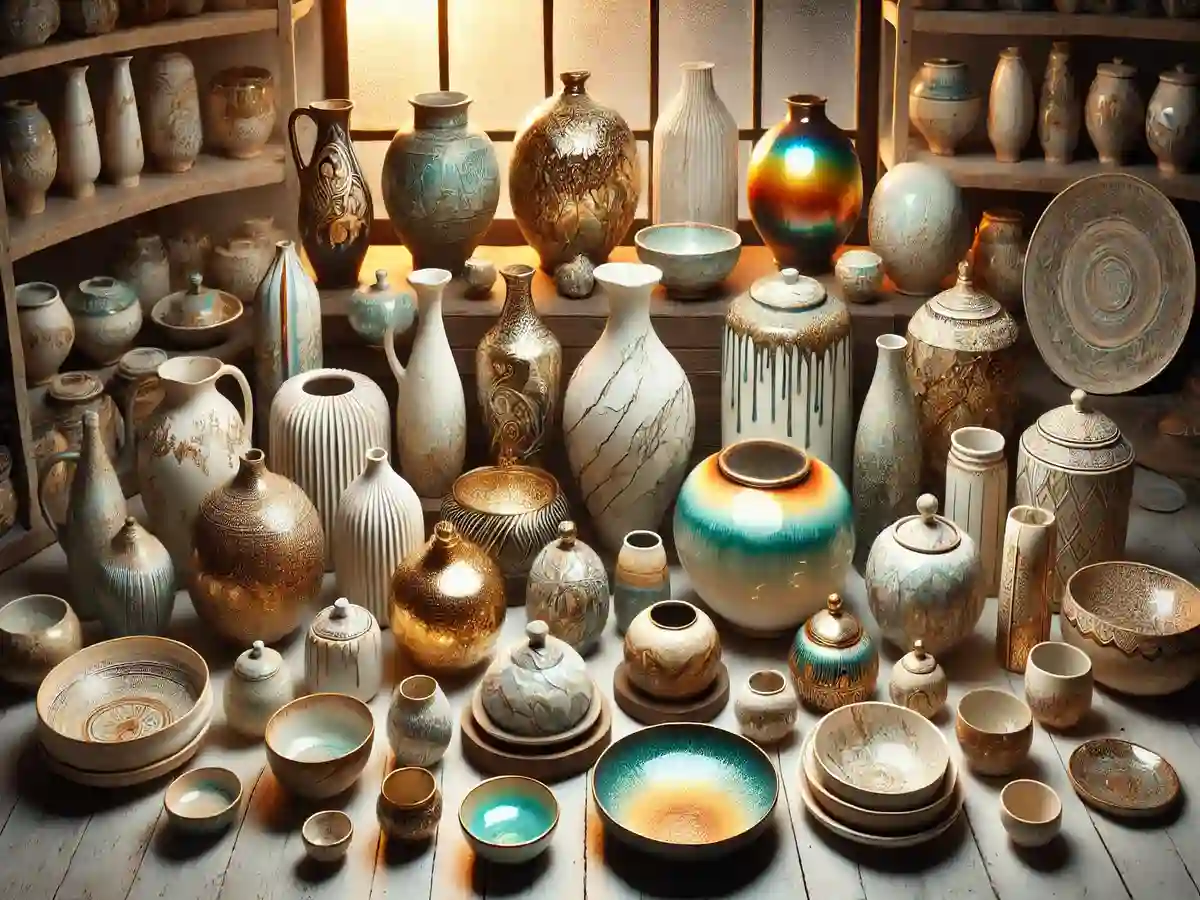Pottery glaze serves as an artistic medium that not only enhances ceramic works but also adds life and beauty, transcending its role as merely a protective layer. Glazes have been applied to improve the beauty and utility of ceramics from prehistoric societies to contemporary craftspeople. This document delves into the fascinating realm of pottery glazes, outlining various processes and finishes that engage both collectors and artists.
Crystalline Glaze Pottery
Crystalline glaze is a pottery technique that creates unique, snowflake-like patterns on the surface of clay through controlled cooling processes. One of a kind, fascinating method that generates breathtaking results is crystalline glaze pottery. This approach uses precise management of the cooling process to promote crystal development inside the glaze. Resulting in intricate, snowflake-like designs that appear to dance across the pottery surface. While learning crystalline glazes calls for patience and accuracy, the amazing results are definitely worth the work.
Gold Pottery Glaze: Adding a Touch of Luxury to Ceramic Works
Gold pottery glaze is a great option for individuals wishing to give their ceramic works some glitz. This opulent gloss not only provides a great metallic shimmer but also transforms any piece into a work of art. Gold glaze adds a touch of eternal elegance, transforming regular clay into dazzling works of art, whether used as an accent or to cover the entire surface.
Crackle Glaze Pottery
Crackle glaze ceramics honor the beauty in imperfection. This method purposefully generates a network of small cracks across the glazed surface to produce a vintage or aged look. The careful fractures give the work depth and character, so distinguishing every object. Rubbing stains or oxides into cracks enhances crackle glazes’ complex patterns.
Drip Glaze: A Newtonian Artistic Touch
Drip glaze pottery achieves stunning visual effects through the manipulation of gravity during the firing process. By applying multiple layers of glaze that blend and interact during firing, drip glaze pottery creates a dynamic surface with cascading rivulets of color, appearing frozen in time. For endless experimentation, drip glazes allow potters to mix colors and apply techniques to create unique works.
Dry Glaze: Embracing Texture and Subtlety
For those who value subdued elegance, dry glaze for pottery presents a distinctive look. This method generates a rich texture, subtly glossy matte, or satin finish. Perfect for accentuating clay’s innate beauty and strengthening sculptural forms are dry glazes. Dry glazes, with their tactile nature, invite touch and thus provide a sensory experience that transcends mere visual appeal.
Iridescent Pottery Glaze: Rainbow Capture
The iridescent pottery glaze offers a visual feast, as it creates surfaces that shimmer and transform with the changing light. Ceramics with this beautiful finish have a mystical quality that resembles soap bubbles or oil slicks. Ethereal, dreamy effects or surprising splashes of color added to more conventional forms can be created with iridescent glazes.
In Summary
There are countless opportunities for artistic expression in the always-changing field of ceramic glazes. From the crystalline forms that reflect natural patterns to the luxurious gloss of gold and the subdued beauty of dry glazes, every technique gives ceramic art its own special personality. The crackle, drip, and iridescent glazes enable objects with rustic appeal to have futuristic appeal, expanding the potter’s palette even further. Knowing pottery glaze enhances ceramic creation, whether you collect ceramics or are a seasoned potter. Every glaze invites us to examine closely, touch, and wonder at the interaction of science and artistry bringing these works to life.

